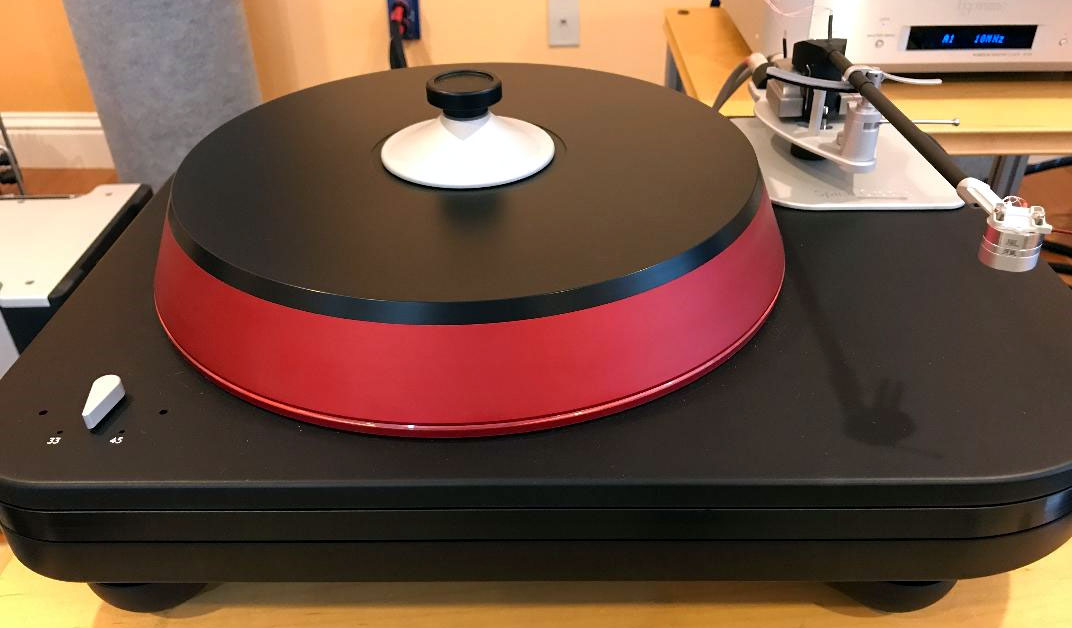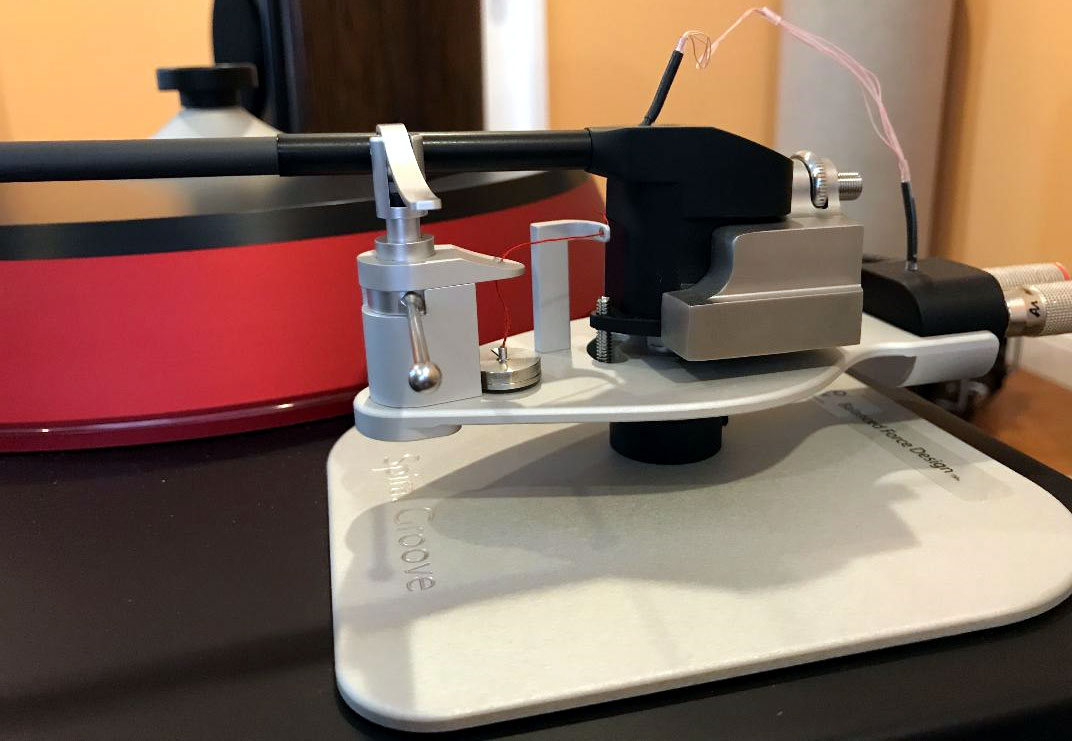At around 50% of the cost of the TriangleArt Master Reference system, but costly nonetheless, the Spiral Groove Revolution turntable system and Centroid tonearm is capable of high drama of a different kind.
Allen Perkins, founder and designer of Spiral Groove, began his career in the mid-80s as the chief designer for SOTA. He then co-founded Spiral Groove with an investor at the turn of the century. While the company offered a complete system solution in its early days, its main focus now is high-end turntable design and manufacturing. The Revolution, subject of this review, costs $18,000. The company’s $6,000 Centroid tonearm is supplied for this review.
The Revolution is one of only two turntables offered by the company, the other being the flagship SG1.2, at $30,000 excluding the Centroid tonearm. Both weigh around 80 pounds. The Spiral Groove turntables bear testament to a design approach dubbed Balanced Force Design, which is described as a convergence of disciplines. Stated on his company’s website, Allen intends Spiral Groove to produce products “that are pleasing to look at and operate, extremely reliable, and always convey the music. It’s a balance of physics, engineering, science, art and intuition.”
Allen’s Balanced Force Design philosophy takes the design of Spiral Groove turntables in a direction that bears little resemblance to the look and characteristics of most turntables in production. The Revolution turntable’s trapezoid metallic red aluminum platter is slathered judiciously by Delrin in metallic black on top. According to Wikipedia, Delrin, or “Polyoxymethylene (POM), also known as acetal,[2] polyacetal and polyformaldehyde, is an engineering thermoplastic used in precision parts requiring high stiffness, low friction, and excellent dimensional stability.”
Spiral Groove applies the use of aluminum and Delrin in dissipating “stylus talk,” namely the stylus-induced vibration on the record surface, while the trapezoidal platter with its increasing mass constitutes a barrier to downward vibrations. These measures work together to isolate vibrations without resorting to use of colossal platter designs. The fused ensemble is then fitted to a second Delrin-embedded aluminum platform, also furnished in metallic black. A trio of graphite/aluminum/elastomer height-adjustable red and black footers completes the presentation.
Blazing his own trail, Allen uses magnetic levitation to reduce the effective weight of the platter on the sapphire bearing to only mere pounds. This serves to reinforce operational stability and longevity of the platter mechanism.
Adhering to the concept of Balanced Force Design, the finish on the Revolution is a warmly muted black for the metallic platform adorned atop by a tonally (color) subdued but continually alluring metallic red platter. On one hand, the Spiral Groove exhibits a solid and affirming physique and invites open display of its objet d’art countenance. On the other hand, the streamlined matte black body and curving metallic red plinth brandishes high-tech profusely with a stance that edges into the realm of Italian supercars.
An outboard chassis houses the controlling circuits. This electronic system completely isolates the turntable system from all electronic noise by generating its own pure sine wave. A synchronous motor is then run on an over-the-top 20-volt power supply for the utmost operational stability.
The 10-inch Centroid tonearm is another eye opener. Yet again another exercise in the Balanced Force Design principle, the Centroid, made of low mass, high strength aluminum and carbon fiber, serves as a high-speed conduit for vibrational energy to travel from the cartridge through the arm tube and then into the turntable main chassis to be dissipated. The Centroid’s aforementioned aluminum and carbon fiber construction also presents high rigidity and low inertia that accords the tonearm freedom of movement. Its counterweight is a patented design that integrates the device into the construction of the arm tube, thus realizing, supposedly, the lowest inertia in the history of unipivot arms. Lastly, the entire arm tube hangs on a fine point literally in which a Swiss sapphire cup jewel atop the arm tube is matched in machining to a hardened steel upper bearing, onto which the arm tube is lowered gently. Spiral Groove claims the Centroid thus “delivers unsurpassed speed, dynamic energy, and tonal purity.” No additional damping measures are required.
- (Page 1 of 2)
- Next page →


